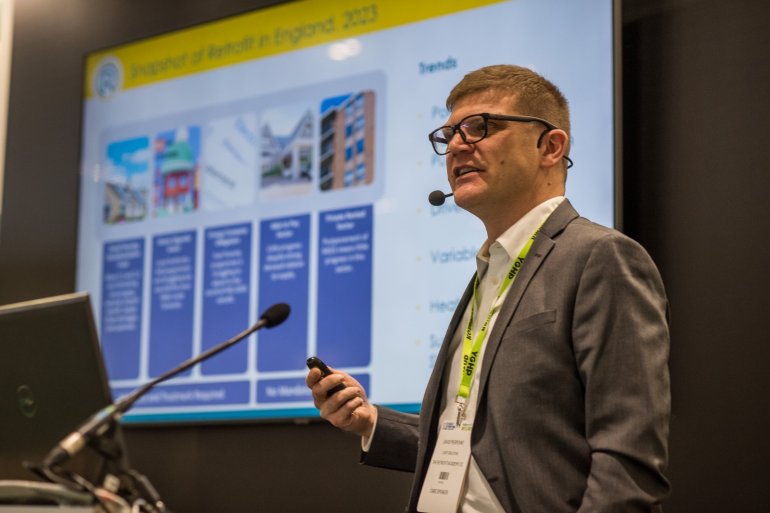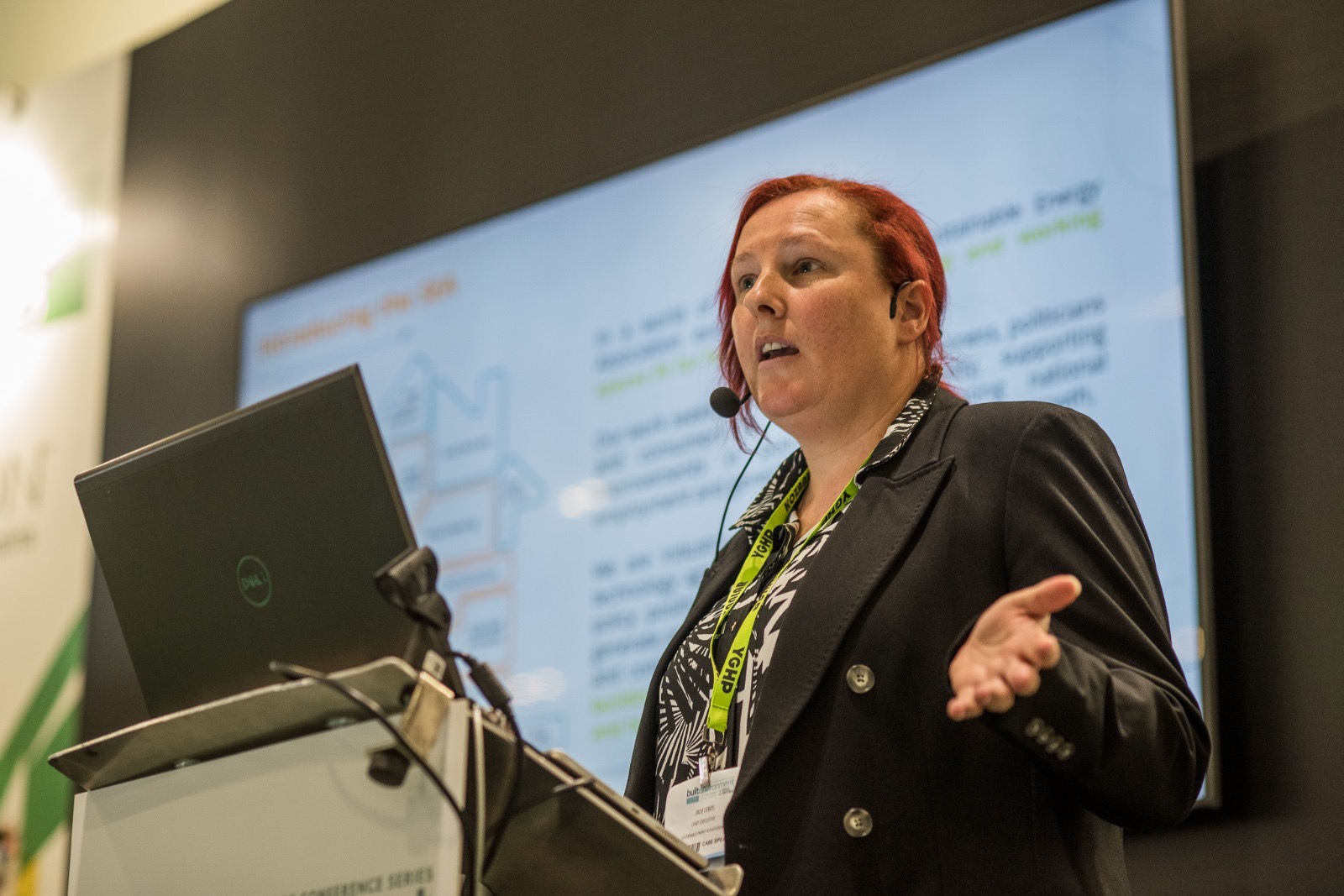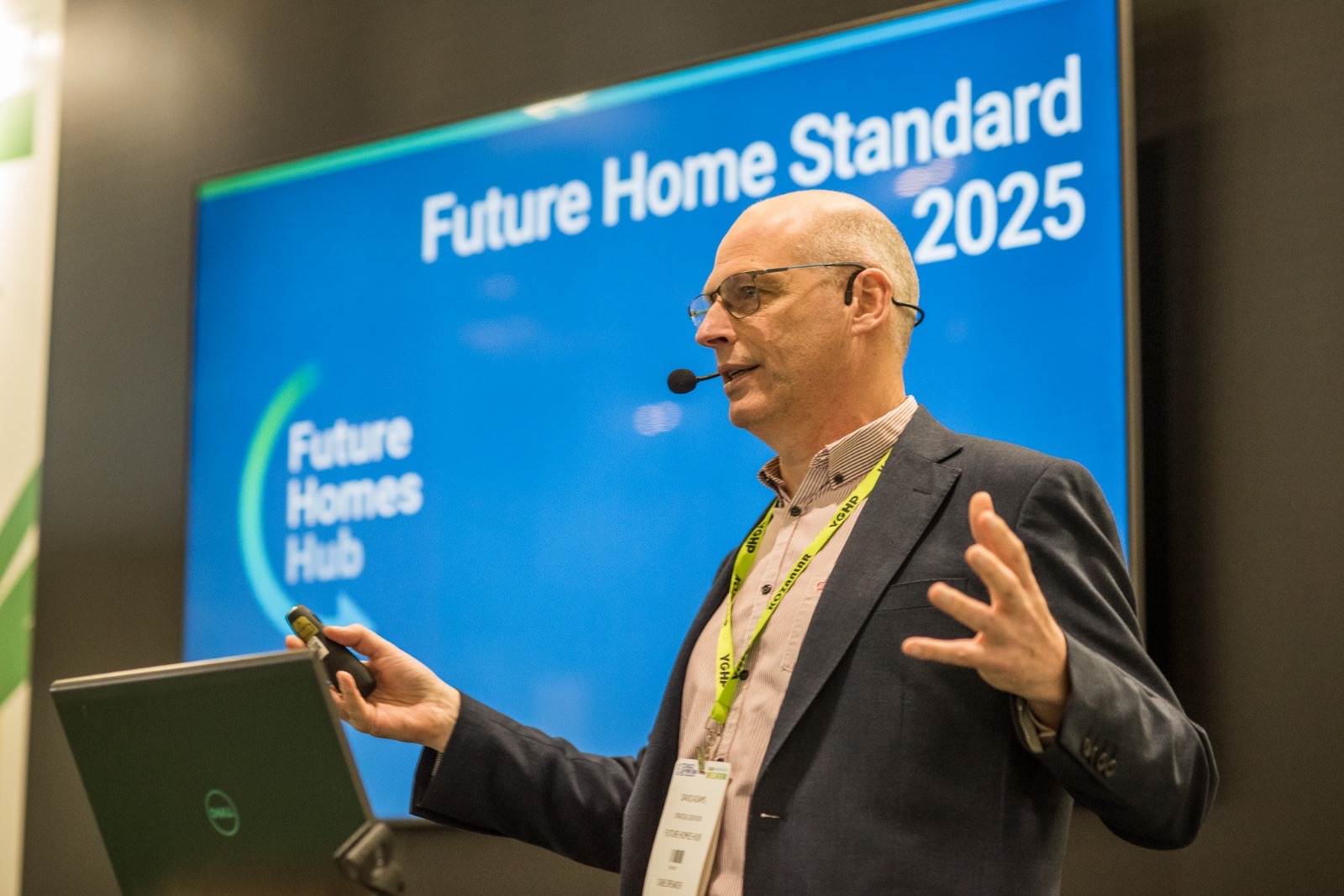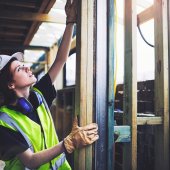CABE LIVE: Day two round-up

Last month, from 5-6 December, CABE and CIBSE joined forces for a free, two-day technical symposium and exhibition. Here's a round-up of the second day of speakers.
Professor Jo Patterson from the Welsh School of Architecture at Cardiff University opened the morning session on day two of the event at London’s ExCel by outlining her team’s whole energy systems approach to retrofitting in domestic and non-domestic buildings and its role in improving energy efficiency, health and climate resilience.
She told delegates the department’s retrofits aim to be as affordable as possible, appropriate to the building types and as applicable as possible so that “whenever social housing companies come and visit, they can say, ‘We’ve got 2,000 of these homes and we can go away and do something similar to our stock as well’.”
Patterson explained how her department monitors the homes being retrofitted for a year before any work is undertaken as this “gives us a really good baseline to compare the impact of the work that we’ve done.”
After outlining the stages in the retrofit process, she told delegates that each one needs to happen “with as many people involved as possible so that everyone understands why they are doing the work”.
Upskilling for the future
Building on Patterson’s point about the importance of upskilling professionals, David Pierpoint, Chief Executive at the Retrofit Academy, touched on PAS 2035, the British standard for retrofitting dwellings, and highlighted the role of retrofit professionals.
“Our organisational mission is to train 200,000 competent retrofitters. It’s no easy task and we are about 6,000 into that,” he said.
Pierpoint talked about some of the qualifications the academy has developed, including a recent one for retrofit designers, noting: “If you are a building engineer… and you are interested in moving into the world of retrofit in a design capacity, then that is the upskilling course that is most appropriate.”
"There is no single solution to decarbonising energy in buildings and a range of technology solutions, finance models and delivery methods is required."
The early afternoon session turned to new buildings and kicked off with a presentation by the Health and Safety Executive’s Head of Energy and Environmental Standards Peter Rankin, who is currently working to establish the Building Safety Regulator’s (BSR) new functions.
Rankin provided an overview of the Future Homes Standard and as well as briefly covering its equivalent for non-domestic buildings, the Future Buildings Standard.
After discussing the BSR’s role, he offered delegates a few tips on how best to respond to the forthcoming consultation on the Future Homes and Buildings Standards, launched the following week on 13 December. Interested parties have until 6 March 2024 to respond.
Rankin added that minsters would also seek views on whether overheating standards should be amended alongside this consultation. He also said the Department for Energy Security and Net Zero planned to implement the Home Energy Model, which replaces the Standard Assessment Procedure (SAP), alongside the Future Homes Standard in 2025.
Steps to decarbonising energy
Jade Lewis, Chief Executive Officer at the Sustainable Energy Association (SEA), said there was no single solution to decarbonising energy in buildings and that a range of technology solutions, finance models and delivery methods was required.
The SEA, she explained, advocates a “fabric first approach”, which includes insulation and draught-proofing to prevent heat loss.
Lewis said that improving a building’s fabric brought many additional benefits that aren’t realised by upgrading the heating system such as improved health and wellbeing.

“That’s why fabric first is adopted in the government’s heat and building strategy and fuel poverty schemes like the social housing decarbonisation fund,” she said.
“The UK, the Scottish and Welsh governments support this approach; the most recent example is the Scottish Heat and Buildings Bill that reiterates the importance of energy efficiency.”
The SEA, she continued, recommends a systems-based approach that considers the entire energy system.
After citing the SEA’s report on a technology agnostic approach to heat and buildings policy, she said the industry body would be launching a paper of recommendations in January 2024.
Future Homes Standard’s implementation
David Adams, Strategic Advisor at the Future Homes Hub, touched on the transitional arrangements set out in the forthcoming Future Homes Standard consultation and the related building regulations that will come into force in 2025.
He warned delegates: “If this is going to be a big step, the previous one-year transition, certainly for the stronger contender specifications simply wouldn’t be possible to skill the industry up [and] to ensure very good customer outcomes.”
Adams added that the Future Homes Hub had made various recommendations on “how you could transition this, not by pushing it back… but requiring a steady build up.”

To help industry prepare for the Future Homes Standard, Adams said the Future Homes Hub had recently set up an implementation board, which would meet every three months and feature representatives from the government and industry.
“Feeding into it is multiple implementation groups,” he added. “We are just kicking three off – consumer, heat pumps and fabrics – and there will be five or six, possibly more, following, once we understand what the government is minded to do. They will be communicating out and working on how we implement this.”
In the final session on the “Joy of Sprinklers”, Thomas Roche, Secretary of the Business Sprinkler Alliance (BSA), talked about the operational reliability of sprinklers and said that in 95% of cases five sprinklers or less controlled the fire. “It’s very rare that you have to go to six or even more,” he said.
Roche noted the BSA wasn’t against the use of water mist systems but said the technology must be used in the right way and in the right place.
“Water mist is much finer,” he told delegates. “If you have a very strong fire, the up draught will carry the water away and evaporate it as steam before it gets to the fire that it is trying to suppress, so you have to have enough heads at the right height putting out the right amount of water mist to reduce it.”










